Gigabyte TRX40 Aorus Xtreme Bruksanvisning
Läs gratis den bruksanvisning för Gigabyte TRX40 Aorus Xtreme (112 sidor) i kategorin moderkort. Guiden har ansetts hjälpsam av 11 personer och har ett genomsnittsbetyg på 4.6 stjärnor baserat på 6 recensioner. Har du en fråga om Gigabyte TRX40 Aorus Xtreme eller vill du ställa frågor till andra användare av produkten? Ställ en fråga
Sida 1/112

TRX40 AORUS XTREME
User's Manual
Rev. 1001
12ME-TR4AXT-1001R
For more product details, please visit GIGABYTE's website.
To reduce the impacts on global warming, the packaging materials of this product
are recyclable and reusable. GIGABYTE works with you to protect the environment.
Produktspecifikationer
| Varumärke: | Gigabyte |
| Kategori: | moderkort |
| Modell: | TRX40 Aorus Xtreme |
| Färg på produkten: | Zwart |
| Vikt: | 145000 g |
| Bredd: | 500 mm |
| Djup: | 550 mm |
| Höjd: | 880 mm |
| Wi-Fi: | Ja |
| Wi-Fi-standarder: | 802.11a, 802.11b, 802.11g, Wi-Fi 4 (802.11n), Wi-Fi 5 (802.11ac), Wi-Fi 6 (802.11ax) |
| Bluetooth-version: | 5.0 |
| Innermått (B x D x H): | 375 x 305 x 725 mm |
| USB-anslutning: | USB Type-A, USB Type-C |
| Maximalt internminne: | 256 GB |
| Ljudutgångskanaler: | 7.1 kanaler |
| Snabbinstallationsguide: | Ja |
| S/PDIF-utgång: | Ja |
| Komponent för: | PC |
| Kompatibla processorer: | 3:e gen AMD Ryzen™ Threadripper™ |
| Minnestyper som stöds: | DDR4-SDRAM |
| Typer av lagringsenheter som stöds: | HDD & SSD |
| Antal minnesplatser: | 8 |
| BIOS-typ: | UEFI AMI |
| ACPI-version: | 5.0 |
| Obuffrat minne: | Ja |
| Slot typ: | Combinatieslot |
| WiFi-AP antennuttag: | 2 |
| DualBIOS: | Ja |
| processortillverkare: | AMD |
| Windows-operativsystem som stöds: | Windows 10 Education x64, Windows 10 Enterprise x64, Windows 10 Home x64, Windows 10 Pro x64, Windows 10 x64 |
| Typ av ethernet-gränssnitt: | 2.5 Gigabit Ethernet, 10 Gigabit Ethernet, Fast Ethernet, Gigabit Ethernet |
| Antal LAN (RJ-45) anslutningar: | 2 |
| processorsockel: | Socket sTRX4 |
| Kabel inkluderad: | SATA |
| Nätverksansluten (Ethernet): | Ja |
| RAID-nivåer: | 0, 1,10 |
| Minnesplatser, typ: | DIMM |
| Minneskanaler: | Fyra kanaler |
| Minnets hastigheter: | 2133,2400,2667,2933,3200,3300,3333,3400,3466,3600,3733,3866,4000,4133,4266,4400 MHz |
| Max antal processorer: | 1 |
| USB 2.0 anslutning: | 1 |
| USB 3.2 Gen 2 (3.1 Gen 2)-anslutningar: | 1 |
| ATX strömkontakt (24-pin): | Ja |
| Kontakter på framsidan: | Ja |
| TPM-anslutning: | Ja |
| Antal USB 3.2 Gen 2 (3.1 Gen 2) typ A-portar: | 7 |
| Antal USB 3.2 Gen 2 (3.1 Gen 2) typ C-portar: | 1 |
| BIOS minnesstorlek: | 128 mbit |
| Moderkort, chipsetfamilj: | AMD |
| Moderkortets chipset: | AMD TRX40 |
| Moderkort formfaktor: | XL-ATX |
| Antal M.2 (M)-platser: | 4 |
| Bluetooth: | Ja |
| Harmonized System (HS)-kod: | 84733020 |
| Medföljande programvara: | Norton Internet Security\ncFosSpeed\nXSplit Gamecaster + Broadcaster |
| Digital optisk utgång för ljud: | 1 |
| Drivrutiner medföljer: | Ja |
| Lagringsenhetsgränssnitt som stöds: | M.2, SATA III |
| Ljudchipp: | Realtek ALC4050H + Realtek ALC1220-VB |
| USB 3.2 Gen 1 (3.1 Gen 1)-anslutningar: | 2 |
| Antal SATA III kontakter: | 10 |
| CPU-fläktsanslutning: | Ja |
| Antal anslutningar för fläktar: | 2 |
| 12V-kontakt: | Ja |
| Ljudanslutning på framsidan: | Ja |
| Stöd för parallellprocessteknik: | 2-Way CrossFireX, 2-Way SLI, 3-Way CrossFireX, 3-Way SLI, 4-Way CrossFireX, 4-Way SLI, Quad-GPU CrossFireX, Quad-GPU SLI |
| RGB LED stiftlist: | Ja |
| Clear CMOS knapp: | Ja |
| Intel Extreme Memory Profile (XMP): | Ja |
| PC hälsoövervakning: | FAN, Temperature, Voltage |
| PCI Express x16 platser: | 4 |
| Stödda kapaciteter hos minnesmodul: | 32GB |
| Systemhantering BIOS (SMBIOS)-version: | 2.7 |
| Version av Desktop Management Interface (DMI): | 2.7 |
Behöver du hjälp?
Om du behöver hjälp med Gigabyte TRX40 Aorus Xtreme ställ en fråga nedan och andra användare kommer att svara dig
moderkort Gigabyte Manualer
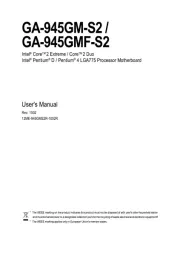
11 Augusti 2025

11 Augusti 2025

11 Augusti 2025

11 Augusti 2025

10 Augusti 2025

10 Augusti 2025

10 Augusti 2025

10 Augusti 2025

10 Augusti 2025

10 Augusti 2025
moderkort Manualer
- Abit
- Intel
- AOpen
- ECS
- Biostar
- Evga
- Sharkoon
- Elitegroup
- Advantech
- Supermicro
- NZXT
- Foxconn
- Asus
- Festo
- EPoX
Nyaste moderkort Manualer
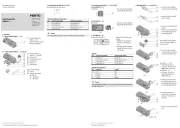
21 Oktober 2025
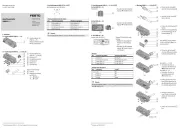
21 Oktober 2025
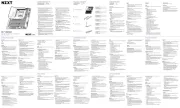
7 Oktober 2025
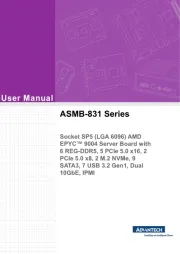
6 Oktober 2025
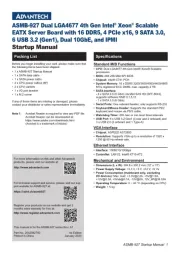
6 Oktober 2025
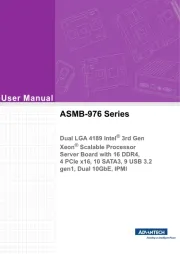
6 Oktober 2025
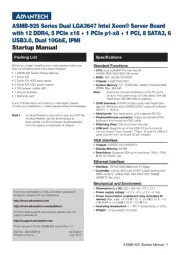
5 Oktober 2025

5 Oktober 2025
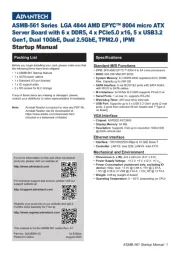
5 Oktober 2025

3 Oktober 2025